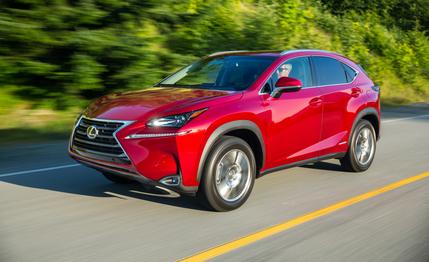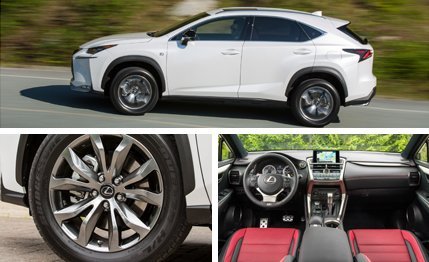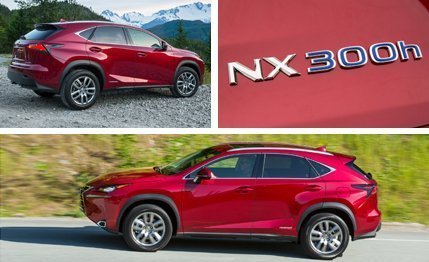
 First Drive Review
First Drive Review
Lexus is about to go off its meds. And it isn’t because the brand’s regimen for success hasn’t been effective. On the contrary, since the aptly named RX hit the market in 1998, Lexus has ruled the roost in the mid-size luxury-crossover segment. Competing formulations have come and gone, but the RX’s ability to dull the ruder aspects of the daily drive and encapsulate its occupants in leather-lined finery has proved to be a strong elixir. The Lexus RX is the top-selling luxury crossover, despite, or maybe because of, a demure, soapstone-shaped exterior that inauspiciously dissolves into the suburban landscape. Okay, so maybe the RX isn’t all about rose petals and scented candles, but we’re thinking few are purchased for their maximum 80.3 cubic feet of cargo capacity.
With the NX, Lexus is looking for a younger, and slightly less ovarian, demographic. So it’s out with the pillowy exterior forms long associated with the RX and in with a relatively riotous interplay of creases and folds from the NX concept and the big X-shaped grille that first appeared in the 2012 GS sedan. After all, who doesn’t like to get spindle-faced every now and then?
There are three versions of the NX that will hit U.S. dealerships later this year: the NX200t, the NX200t F Sport, and the NX300h hybrid. All will be available in a choice of front- or all-wheel drive. The hybrid will be the sixth to join the already hybrid-intensive Lexus lineup.


The RAV4 Connection
Just as the RX dipped into the Camry parts bin for various bits, the new NX raids the RAV4 pantry where it makes sense to do so. The two compact crossovers share the same 104.7-inch wheelbase, and Lexus says the NX uses the RAV4’s front floorpan and cowl-and-dash structure as well. Various other drivetrain components are also shared, but Lexus claims that 90 percent of the NX’s content is specific to that model.
The biggest news is under the hood of the NX200t, where a new turbo engine—the first in a Toyota product since the mid-1990s Supra—makes its debut. Rated at 235 horsepower, the 2.0-liter four-cylinder is built for good throttle response and not ultimate performance, with an eye toward low emissions and fuel consumption. Equipped with dual variable valve timing, it can switch from the regular Otto cycle to the Atkinson cycle as required. The exhaust manifold is integral with the cylinder head, which features a built-in water jacket that cools the exhaust and lowers combustion temps, allowing for more boost without requiring excessive air-fuel-mixture enrichment, which is good for fuel economy. The single turbocharger is a twin-scroll design, wherein two of the engine’s four manifold runners are paired with each impeller for reduced lag. The turbo is Toyota’s own design and uses an air-to-liquid intercooler with its own cooling system to pull out more heat. A six-speed automatic transmission with manually selectable ratios is borrowed from the RAV4.


Even though the output of the NX200t’s engine is competitive with that of the 2.0-liter, four-hole turbos in the Audi Q5 and BMW X1 and X3, a big throttle stab won’t exactly push you back in your seat. Where the turbo four really excels is in part-throttle tip-in at low-to-medium engine speed; it starts generating its maximum 258 lb-ft of torque at a mere 1650 rpm and tackles uphill grades at 2000 rpm without working up a sweat. There’s no sense of the engine building boost, and it is Lexus-smooth, too, without any of the booming found in some other four-cylinder mills. On the other hand, there isn’t a huge well of power at the top end for passing, and the engine’s torque trails off above 4000 rpm.
Expect to see this engine under the hood of more Lexus products (and maybe even a few Toyotas) down the road as fuel-economy standards continue to tighten. Lexus says the two-ton NX200t can get to 60 mph in about seven seconds, which is well behind the 6.2-second 0-to-60 performance we’ve measured in the all-wheel-drive BMW X1 and X3.